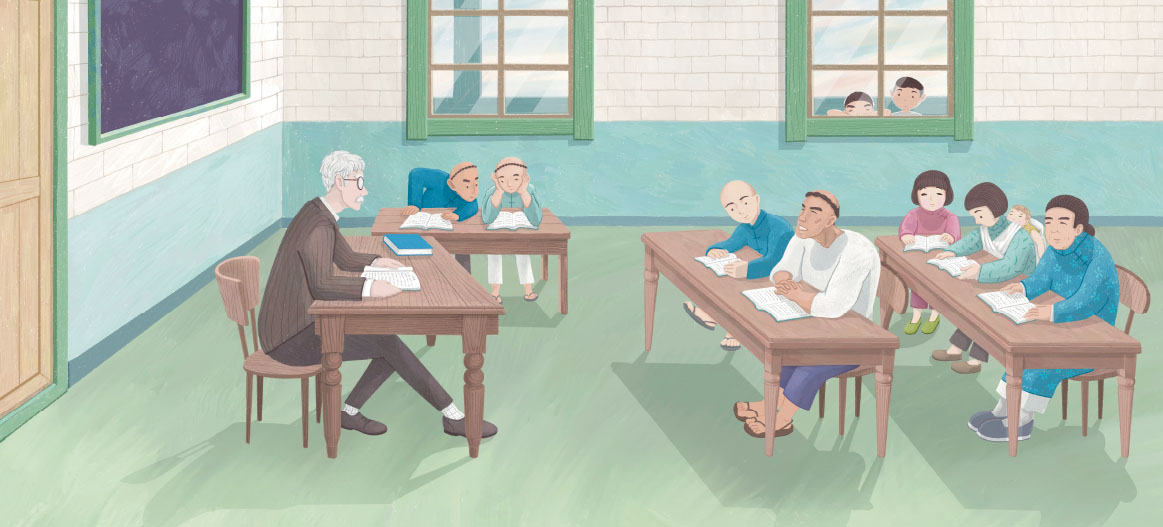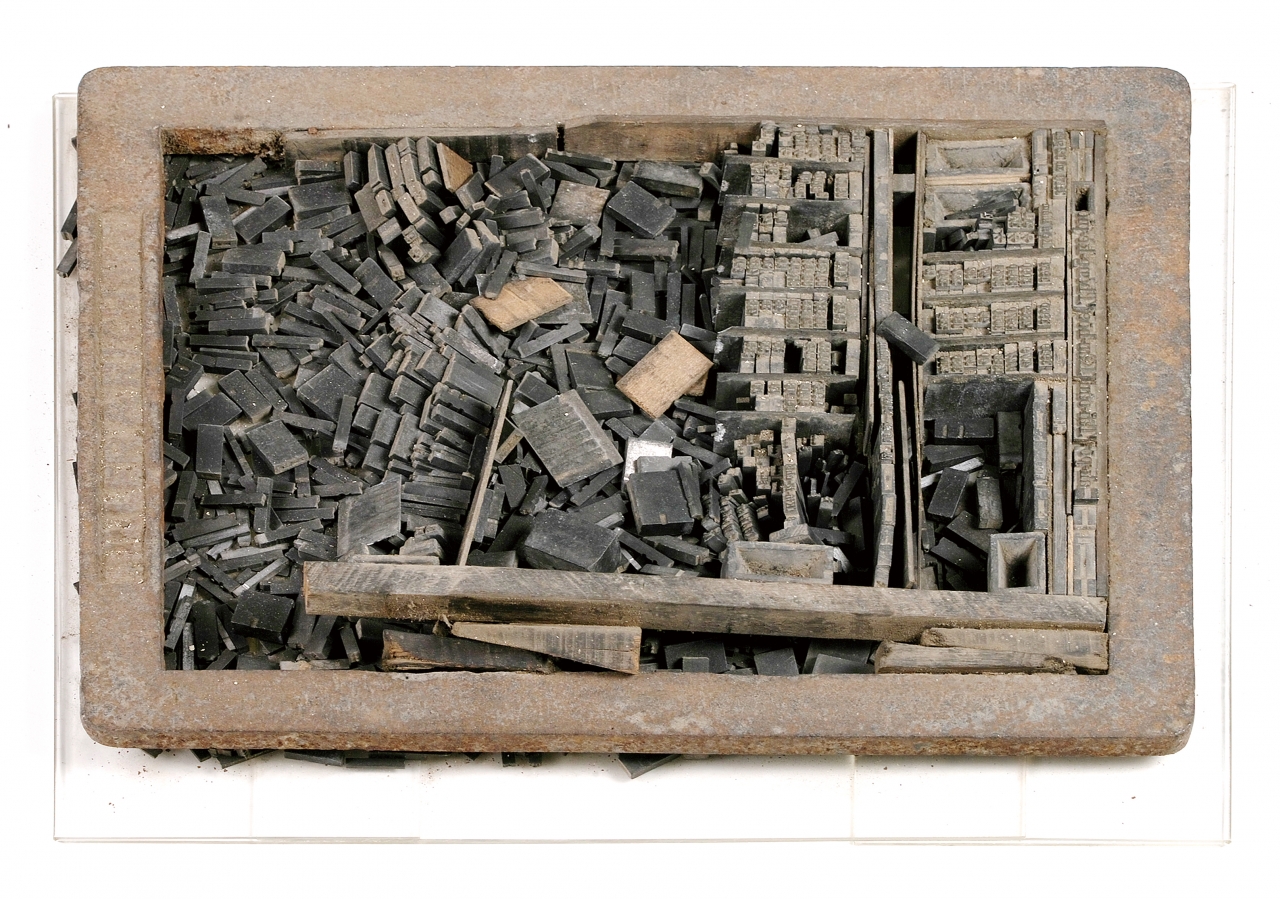
I Have Good News as You Speak - The Story of Reverend Thomas Barclay 【Parent-Child Reading Guide】
點閱次數:1163
The 16-Year-Old Who Made a Promise
The Rev. Thomas Barclay (1849–1935) was born to a Huguenot merchant family of Glasgow, Scotland. Blessed with a pleasant and well-provided childhood, Barclay entered the University of Glasgow at the age of 15 and graduated as Master of Arts. While a student of Sir William Thomson he also excelled in science and mathematics, his treatise on dielectrics earning a mention in Encyclopædia Britannica.
Barclay led a devout, pietistic life since he was young. “I consecrate to Thee all that I am and all that I have…” read Dedication, a document he wrote on his seventeenth birthday. Barclay reaffirmed this pledge to evangelize by appending a signature to the document every year from 1865 to 1934; his wife, Elizabeth, would follow suit after marriage. As a common heritage of the Taiwanese society, Dedication symbolizes the Barclays’ will to protect and serve and the perseverance in their deeds.


Long Legs and a Torn Nightshirt
In 1869, Barclay met Rev. Carstairs Douglas at the Free Church College, Glasgow, and was inspired to become a missionary to the East. Six years later, he arrived in Taiwan. Barclay soon found that the mountainous island was overgrown with devil’s thorns, screw palms, and cogon grass, and journeys between far-flung congregations could only be made on foot. The subtropical climate meant that it could be scorching one moment and thunderously pouring the next, and one could not wade or raft across too many rapids without catching a bout of malaria or any of the insect-borne fevers. Barclay never felt sorry for himself, though, and would joked that he was chosen by God for the job because of his long legs.
Influenced by Calvinism, Barclay emphasized that piety as a way of life should be present in home services, in prayers, and every hour of the day. One of the effects Barclay left behind was a nightshirt that was torn at knee-length—proof how often he prayed. He valued nurturing and the essence of his congregation’s faith greatly, and held that his work was to imbue true knowledge of God instead of pursuing attendance numbers. He would rather lose tithers than having fake believers that co-opted baptism for upward mobility.
Laying the Foundation of a Seminary
Barclay founded and served as the first principal of Capital College, the predecessor to today’s Tainan Theological College and Seminary (TTCS). Featuring a western curriculum since as early as 1876, the school prepared the would-be ministers in biblical studies as well as natural and social sciences, and expected them to be forces of progress in society while never relinquishing their faith and rationality. The old building of Capital College, now a scheduled historic site bearing Barclay’s name, was completed in 1903, paid for by both the local church and British Christians (Barclay fund-raised on his furlough).

Promoting Peh-oe-ji and the First Newspaper
In Barclay’s thinking, every member of a healthy congregation must be able to read the Bible. The easiest way to achieve this was through the mother tongue and the promotion of Peh-ōe-jī (POJ). During
said furlough, Barclay made a point of learning the art of typesetting and impression. In 1884, he finally got the small press Dr. James Laidlaw Maxwell acquired for the mission three years ago working, and opened a print shop called Chū-Tin-Tông. Communication in the church was significantly improved, and culminated in the
publication of Taiwan’s oldest and longest-running newspaper, Taiwan Church News. The first edition of the paper went into circulation on July 12, 1885, as a four-page monthly.

Dictionary and Translations
Barclay saw the importance of enlightened Bible translations to the gentile’s ability to discern preachings and understand the Word. He completed a translation of the New Testament from Koine Greek to Taiwanese in 1916. In 1923,
his supplement to Rev. Carstairs Douglas’ dictionary of the Taiwanese language was published. He then spent four years translating the Old Testament from English and classical Hebrew. When it was put to print in Shanghai in 1932, the January 28 incident broke out, destroying the master copy and the movable types. Fortunately, a more or less intact copy of the manuscript was recovered from the rubble, and Barclay’s Old Testament, after several setbacks, was finally available near Christmas of 1933.
Mrs. Elisabeth Barclay
Ms. Elisabeth A. Turner wedded Thomas Barclay in 1892. As a medical professional, she worked alongside Barclay in his multi-faceted undertaking. She also toured the congregations, and held evening gatherings in TTCS’s faculty dormitory for Sin-lâu Hospital employees and missionary household helpers (a precursor to today’s Tainan East Gate Barclay Memorial Church). She wrote often to friends back home; some of her letters were collected in the book Letters from Far Formosa to Boys and Girls. She died of brain tumor in 1909, having given up futile treatment to evangelize until her last breath.
The Story Lives On
The Rev. Ko Kim-sing, a student of Barclay, once described him as “serious in attitude, gentle in speech, steady in temperament, and a peace-lover.” While resolving a land dispute concerning the church at Jī-lūn in 1885, Barclay was splattered with feces all over by an angry, unreasonable crowd, who also assaulted the members present. A calm Barclay gave his retort. “What a waste! Don’t you need them to fertilize your paddies?” he said, at least according to the older members who praised his courage, tolerance and wit. Barclay himself denied saying that; or if he did, “it was not out of kindness but ridicule.” It was clear that Barclay wanted nothing like adulation or an overblown reputation, and his level-headedness ultimately came from a conviction of the heart.
Barclay was a giver, a friend of the meek, a genial supporter of his missionary colleagues, and most importantly, one who leaned on God and held fast to Grace. On the sixtieth anniversary of his arriving in Taiwan, in June 1935, Barclay was four months into a stroke. On October 5, he returned to the Lord’s embrace, and was interred in the Christian Cemetery of Tainan. He had been faithful to his teenage promise to God, fulfilling it with all his life. Like a grain of wheat bearing many more, Rev. Thomas Barclay was gone, but his story of love and trust lives ever on.
The author would like to thank Tainan Theological College and Seminary, Taiwan Church Press, the Archives of the Presbyterian Church in Taiwan, Thài-pêng-kéng Maxwell Memorial Church, Dr. How Liang-hsin and Tainan East Gate Barclay Memorial Church. Without their assistance this book would not have come into being.
* Photo credit: Archives of the PCT